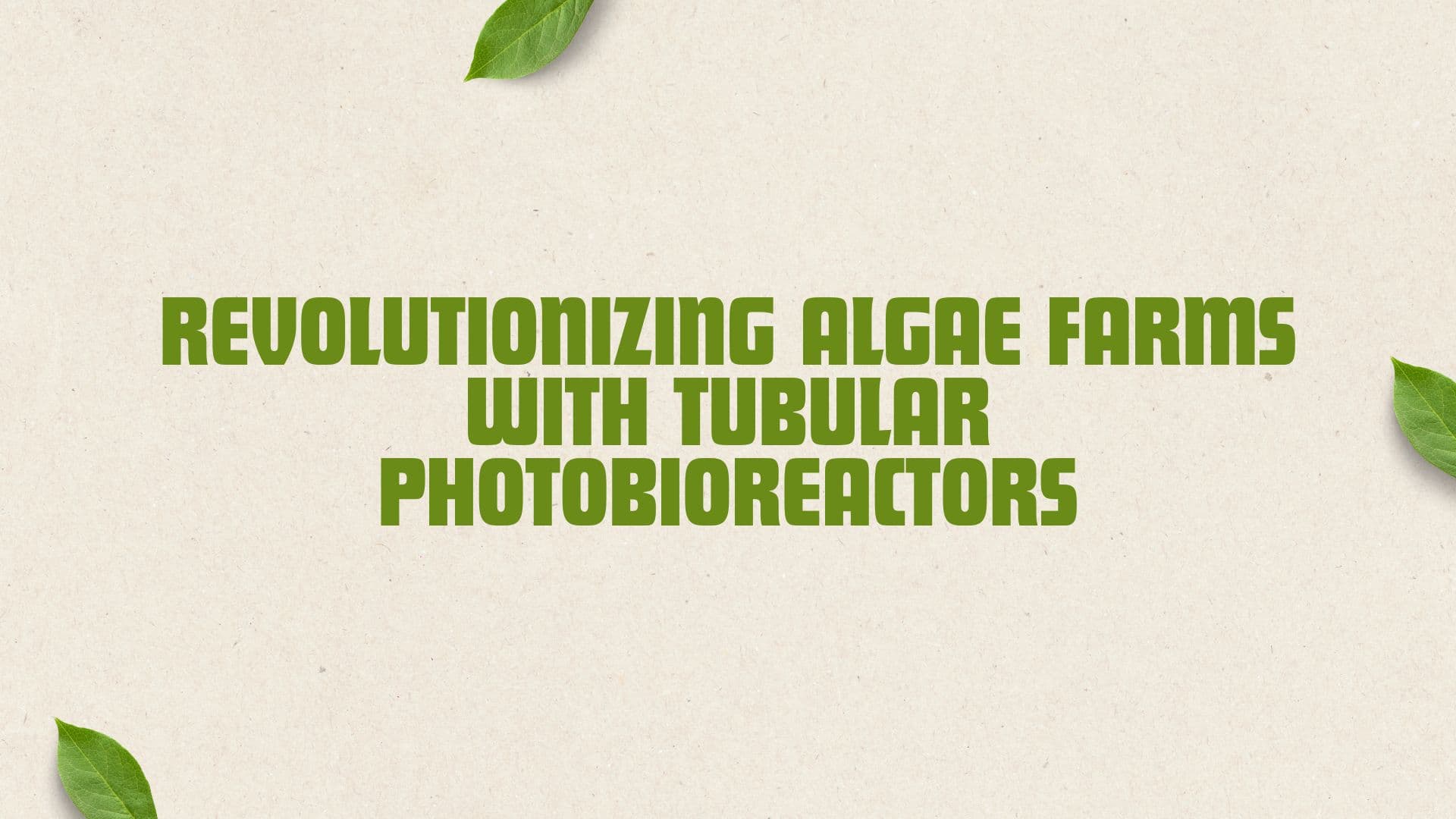Revolutionizing Algae Farms with Tubular Photobioreactors
Revolutionizing Algae Farms with Tubular Photobioreactors
1. Introduction: What You’ll Learn About Revolutionizing Algae Farms with Tubular Photobioreactors
Tubular photobioreactors are rapidly emerging as game-changing tools in algae cultivation, enabling higher biomass yields, tighter process control, and lower environmental footprints than traditional methods. In this introduction, you’ll learn how these innovative systems drive breakthroughs in sustainable biofuel, food-grade algae products, and climate tech innovations.
By the end of this article, you’ll have a clear roadmap through the fundamentals of photobioreactor technology, the benefits of closed-loop cultivation, real-world pilot projects, challenges facing scale-up, and future research directions. Let’s embark on a deep dive into how tubular photobioreactors are reshaping algae farming.
2. What Are Tubular Photobioreactors? Exploring Photobioreactor Technology in Algae Cultivation
At their core, tubular photobioreactors are closed cultivation systems comprised of transparent tubes through which algae-laden culture medium flows. Unlike open-pond setups, these reactors maintain stringent environmental control, safeguarding cultures from contamination and optimizing growth conditions around the clock.
Key design features that distinguish tubular photobioreactors in algae cultivation include:
Transparent tubing arrays that maximize light penetration and surface area.
Continuous flow systems that prevent cell settling and ensure uniform nutrient exposure.
Automated monitoring and control of temperature, pH, CO₂ dosing, and light intensity.
These innovations collectively yield higher biomass concentrations, faster growth rates, and more consistent product quality compared to flat-panel or open-concentrator systems.
3. How Tubular Photobioreactors Transform Algae Cultivation: Core Benefits and Innovations
One of the most compelling advantages of tubular photobioreactors is enhanced productivity. By providing optimized light exposure and mixing, closed tubes can achieve up to 10 times greater biomass yields per square meter than traditional raceway ponds.
Additional benefits driving the shift toward closed photobioreactor technology:
Reduced contamination risk: The sealed design eliminates airborne contaminants, invasive species, and predators common in open systems.
Precise process control: Real-time sensors and actuators allow automated adjustment of environmental parameters, ensuring optimal conditions for each algae strain.
Scalable modularity: Tubular arrays can be added or reconfigured to match available space and production needs.
As climate tech innovations demand sustainable production, the reliability and performance of tubular reactors position them as a cornerstone for next-generation algae farms.
4. Harnessing Tubular Photobioreactors for Sustainable Biofuel Production
Converting algae biomass into renewable biodiesel and biogas involves several sequential steps: cultivation, harvest, lipid extraction, and transesterification or anaerobic digestion. Tubular photobioreactors streamline the cultivation phase, delivering high-density cultures rich in lipids.
A typical biofuel production workflow using tubular photobioreactors might include:
Continuous culture growth in transparent tubing under optimized light and CO₂ supply.
Automated harvesting via membrane filtration or centrifugation to separate algae biomass from the culture medium.
Sustainable lipid extraction leveraging solvents or supercritical CO₂ methods.
Conversion of extracted lipids into biodiesel through transesterification, or biogas via anaerobic digestion of residual biomass.
Several pilot projects and commercial ventures are already demonstrating cost-effective, low-carbon biofuel yields. For example, Project VerdeBio in Europe uses a 5000-liter tubular system to supply biodiesel to regional transport fleets, cutting lifecycle emissions by up to 80% compared to fossil diesel.
5. Expanding Applications: Food, Nutraceuticals, and High-Value Algae Products
Beyond energy, tubular photobioreactors unlock high-value compounds for food and health markets. Precise control over growth parameters enables production of:
Algal protein isolates for plant-based foods.
Specialty Omega-3 oils for dietary supplements.
Colorants such as beta-carotene and phycocyanin for natural food dyes.
Advancements in photobioreactor technology ensure consistent nutrient profiles, microbial safety, and scalable batches, meeting stringent regulatory standards for human consumption. As consumer demand for sustainable, nutrient-dense foods grows, the market outlook for food-grade algae ingredients is poised to expand at a compound annual growth rate (CAGR) of over 10% through 2030.
6. Climate Tech Innovations: Tubular Photobioreactors’ Role in Carbon Capture and Environmental Impact
One of the most promising applications of tubular photobioreactors lies in carbon capture. Algae naturally sequester CO₂ during photosynthesis, converting greenhouse gas into biomass. Closed reactors can integrate directly with industrial exhaust streams, scrubbing CO₂ emissions from power plants, cement works, and steel mills.
Key climate tech innovation pathways include:
Direct integration with flue gas pipelines to feed concentrated CO₂ into algae cultures.
Pairing with wastewater treatment facilities to remediate nutrients while producing biomass.
Utilizing bioreactor effluent as biofertilizer, closing nutrient loops in circular-economy models.
These approaches not only reduce net emissions but also generate valuable co-products, creating economic incentives for wide-scale adoption.
7. Challenges, Limitations, and the Future of Photobioreactor Technology
Despite compelling benefits, tubular photobioreactors face technical and economic challenges on the path to large-scale deployment. High capital costs for materials, LED lighting, and automated controls remain barriers for many operators.
Emerging solutions and research frontiers include:
Advanced materials: Low-cost, durable tube substrates that balance transparency with UV resistance.
Energy efficiency: Integration of solar concentrators and next-generation LEDs to reduce electricity consumption.
AI-driven optimization: Machine learning algorithms that fine-tune nutrient feeds and light cycles in real time.
Genetic strain improvements: Engineering algae with enhanced productivity, stress tolerance, and lipid profiles.
Looking ahead, hybrid cultivation models combining open ponds and closed tubes may unlock economies of scale, while ongoing R&D promises to drive down operating expenses and expand operational flexibility.
8. Join the Conversation: Share Your Thoughts on Algae Farming with Tubular Photobioreactors
We’d love to hear from you! Have you experimented with tubular photobioreactor systems or open-pond algae farms? Do you see new applications for closed-loop cultivation in your region or industry?
Leave a comment below or share your experiences on social media. Your insights can help shape the next wave of climate tech innovations in sustainable biofuel, food production, and carbon capture using photobioreactor technology.
